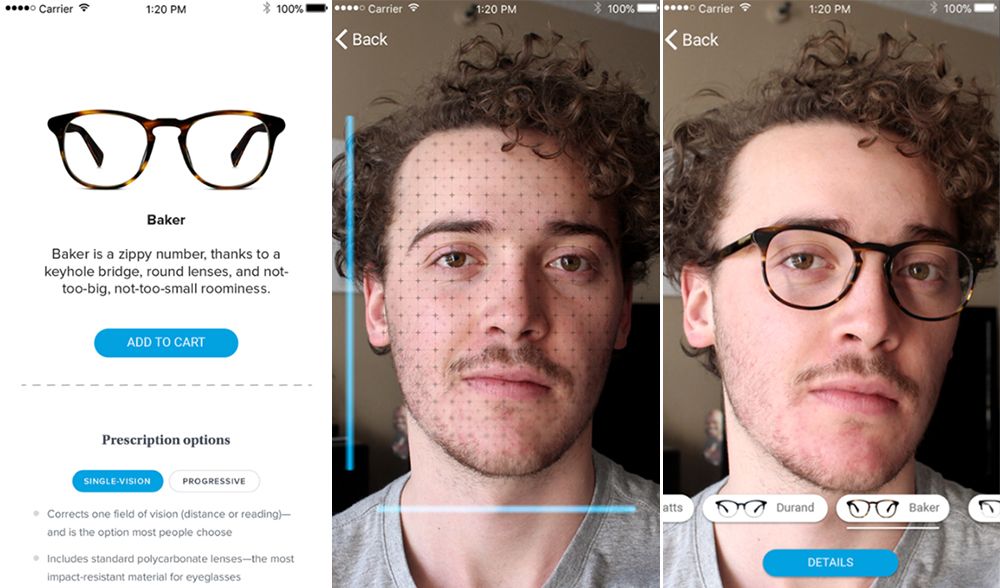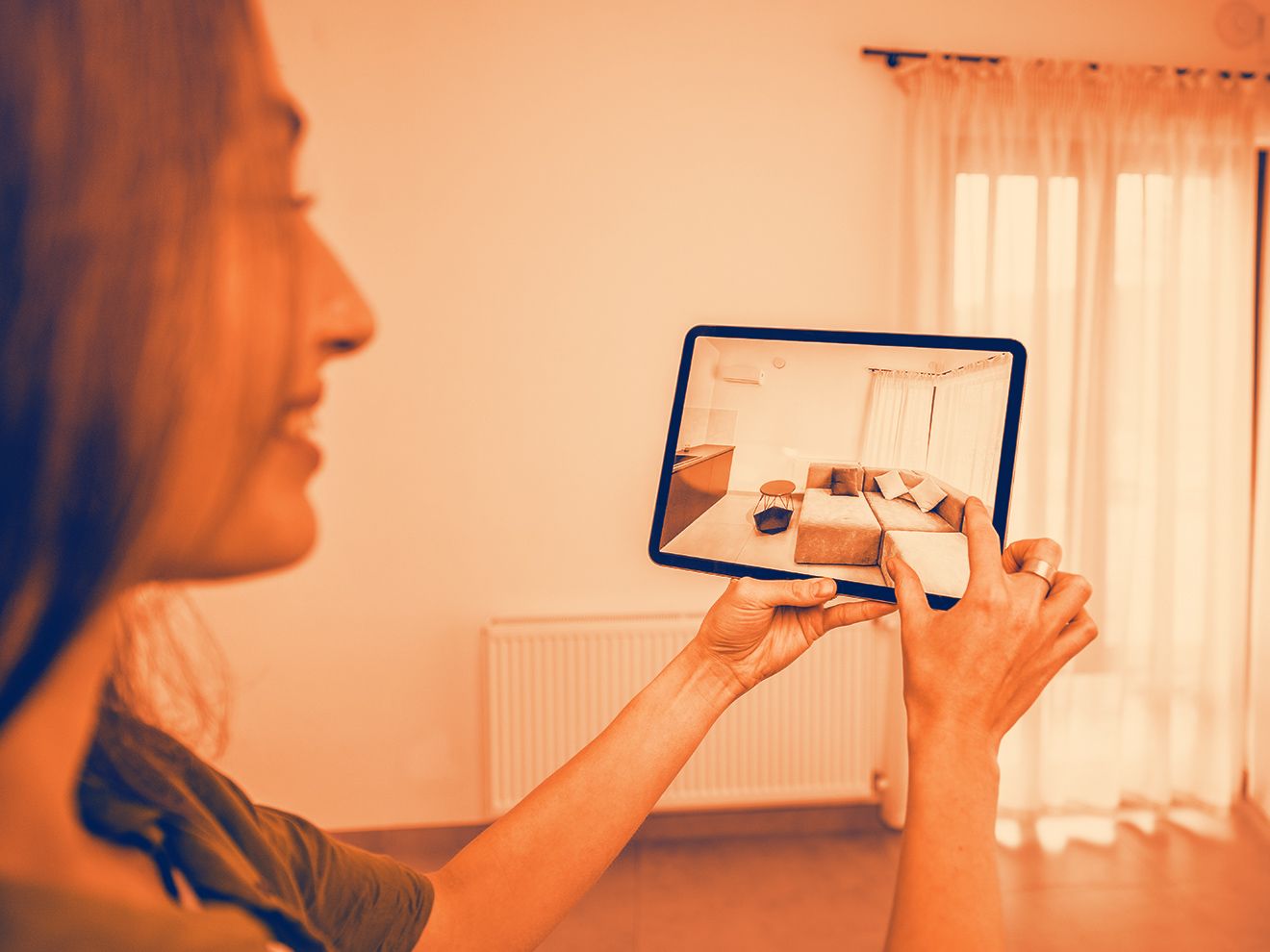More than 2 billion people worldwide purchased something online in 2021. Global e-commerce sales reached nearly 5 trillion dollars in the same year. This number is only projected to have a steep rise in the future. There are numerous prospects for success for those who enter the e-commerce space. More individuals are turning to e-commerce for their retail requirements because of its ease, security, and efficiency.
You've already been exposed to the challenges of the internet market if you want to strengthen your e-commerce platform or have been compelled to adjust your business online. Sales declines, growing transportation costs, and managing consumer expectations are severe threats to your bottom line.
To succeed in the challenging transition to online retail while remaining competitive, you must instantly establish trust, distinguish yourself, and provide a frictionless shopping experience. The good news is that such advances like augmented reality (AR) have provided an obvious answer.
In this post, we'll look at some of the most frequent issues e-commerce business owners face and how AR's unique features can help you and your customers solve them.
What is augmented reality?
Augmented reality (AR) is a technology that ties real-world surroundings with virtual features at its most basic level. Comparatively, virtual reality (VR) immerses users in an entirely manufactured environment that separates them from their real-world surroundings.
An augmented reality application provides an additional layer of engagement and involvement to the online purchase journey in a retail context, allowing companies to meet consumers' demands for more immersive shopping experiences. We're on the verge of seeing AR become a popular element in online retail, thanks to the advent of Google's ARcore and Apple's ARKit, which make it much easier for firms to include AR into their products.
According to the numbers, consumers appreciate having augmented reality as part of their online buying experience, and they want more of it. Moreover, half of the consumers (61%) say they prefer to shop on augmented reality technology sites.
Consumers have been compelled to migrate to digital channels to meet their demands due to the COVID-19 epidemic, and many are doing so for the first time. Because they cannot readily serve their consumers through physical channels, omnichannel and multichannel merchants have had to reinvent themselves to reduce friction in the online buying process.
AR technology has a wide range of possibilities for retailers and digitally native firms looking to add a more immersive aspect to traditional e-commerce, especially when in-store retail is viewed as a health risk.
However, it's vital to highlight that AR's recent growth has been boosted by the widespread use of AR-capable smartphones and tablet devices for conducting digital shopping excursions. As more people use their phones to look up product information and prices, augmented reality is a natural extension that people have embraced.
Benefits of augmented reality in e-commerce
1. Lower return rates (and higher conversions)
Even when buying at the same retailer, there has historically been a significant gap between the internet and in-store customer experiences. This is especially difficult when digital and physical selling channels have advantages and disadvantages.
Consumers can engage with products in a brick-and-mortar store, but it is limited to a specific time and location. While internet retailers allow customers to purchase on their terms, they must take a chance on things that have not been tried or evaluated.
AR enables online businesses to extend the in-store experience to the e-commerce customer journey, giving customers unprecedented flexibility in engaging with products and making purchasing decisions.
Due to the difficulties of “testing” products, high return rates are a chronic concern in e-commerce. By allowing buyers to digitally "test" a product in the setting of their own home or body, augmented reality goes a long way toward reducing these obstacles. This allows consumers to avoid making improper purchases that will end up in your warehouse.
Furthermore, AR gives customers more assurance that their purchase selection is correct. According to Houszz research, buyers are 11 times more likely to buy furniture if they can utilize augmented reality to see how it looks in their house.
2. Increasing your brand value
For brands, defining 'value' may be difficult; the intangible something extra' provides a fulfilling customer experience. It persuades clients to select you over the competition and converts first-time buyers into loyalists. On the other hand, consumers recognize a value-added retailer when they see one.
Augmented reality is a significant signal of value because it provides consumers with comprehensive tools to aid their purchasing decisions. According to surveys, consumers would be willing to pay up to 40% more for a product that could be “tested” via augmented reality.
3. Building connections irrespective of restrictions
The COVID-19 epidemic had a particularly negative impact on retail. Businesses that previously relied on the human connection provided by brick-and-mortar stores are now obliged to have an online presence (click and mortar) to communicate with their clients. Consumer trust can be harmed by a lack of "personal connection" for many buyers who prefer to see, feel, and try things before purchasing. The financial rewards of effective internet retail, on the other hand, are impossible to overlook.
Even small and medium enterprises can benefit significantly from e-commerce with careful execution. But how do you differentiate yourself from the competition by offering a unique, personal, and high-impact online purchasing experience?
Fortunately, AR technologies are paving the way.
Customers can interact with your items using phones and mobile devices daily. While AR technologies aren't a perfect substitute for in-store purchasing, they can provide customers with unique chances to interact with your product.
Let's take the eyewear industry, for example. A decade ago, it might seem impossible to shop for eyeglasses online - what if it doesn't fit properly, the look and feel of the product, and many more concerns.
But fast forward to 2022 - AR made it possible. Customers like to test their products before they buy them; therefore, as an eyeglasses merchant, you want to make sure they are a perfect fit. AR takes advantage of the shopper's device's camera to allow them to see themselves in any style before making a purchase.

What's the result? The shopper is more confident in their decision because they know how they seem in the merchandise. This approach has a two-fold effect. When customers virtually "try on" frames, they get a tailored experience, and the company saves time and money by giving customers a tool that mimics the in-store experience.
Wanna is another startup that employs augmented reality to build a personal connection. It uses a scannable QR code to show users how their shoes look when worn. Wanna's AR software, like Clearly's, allows customers to view themselves in products while shopping online.
Why does it function like this? Although AR does not replace physically touching a product in a store, it does improve the visual experience. The ability to envision oneself using a product establishes an emotional connection with the buyer, urging them to buy—people in the technological world debate the value of augmented reality (AR) and its various applications. Knowledge management is another example of such an application. The use of knowledge management software assists in increased efficiency, better collaboration, and cost minimization.
Real-life examples
Amazon isn't the only well-known brand that has embraced augmented reality to improve its e-commerce platform. Shopify has added new features for its merchants, allowing them to use augmented reality, 3D models, and video to improve customer service, engagement, and confidence.
The use of augmented reality technology by big businesses such as Amazon and Shopify signals a shift. Online purchasing has a promising future. It's also in 3D. In e-commerce, augmented reality is already a well-known function.
AR will be required for e-commerce organizations to be competitive as more retail moves online. The distance between visiting a store and shopping online is reduced thanks to augmented reality capabilities.
It also strengthens the personal connection between the shopper and the product, boosts buyer confidence, introduces unique experiences to an oversaturated market, and fosters brand loyalty and product recognition.
To sum up
Integrating augmented reality into the online purchasing landscape gives companies of all sizes a considerable opportunity to develop.
Many small businesses rely on tools supplied by corporations such as Shopify. While they provide an entry point into the industry, their restricted capabilities leave little room for innovation and customization. Instead of relying on tools built by AR professionals, medium to big enterprises wishing to create something genuinely unique should use tools developed by AR experts.
This is a guest post by Sowmya.
About author:
Sowmya is a content developer & digital media specialist at Knowmax, a knowledge management system for enterprises who are seeking to reduce their customer support costs & increase their agent productivity.
✍️ Want to write for us? Check out our guest blogging guidelines here.




